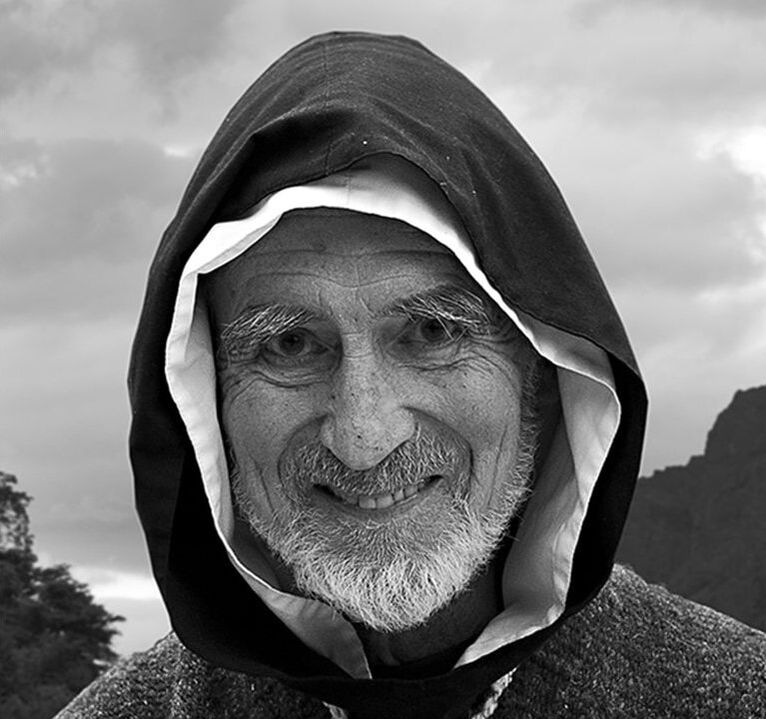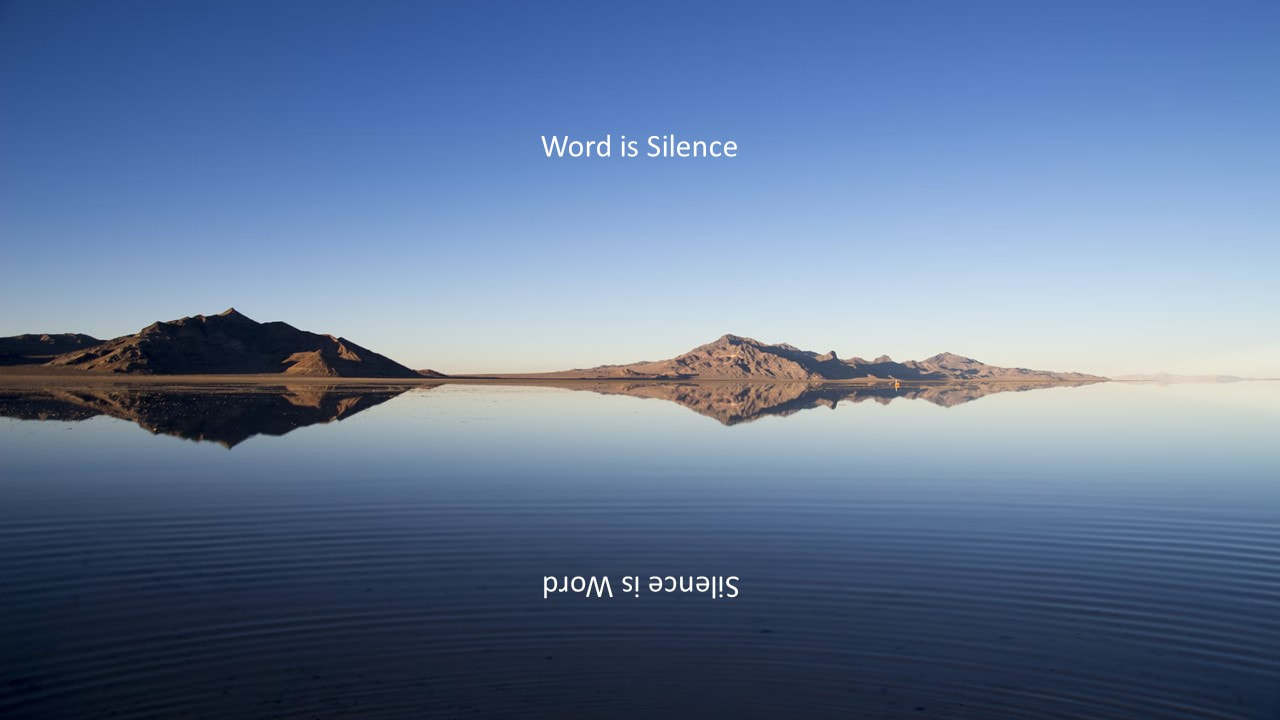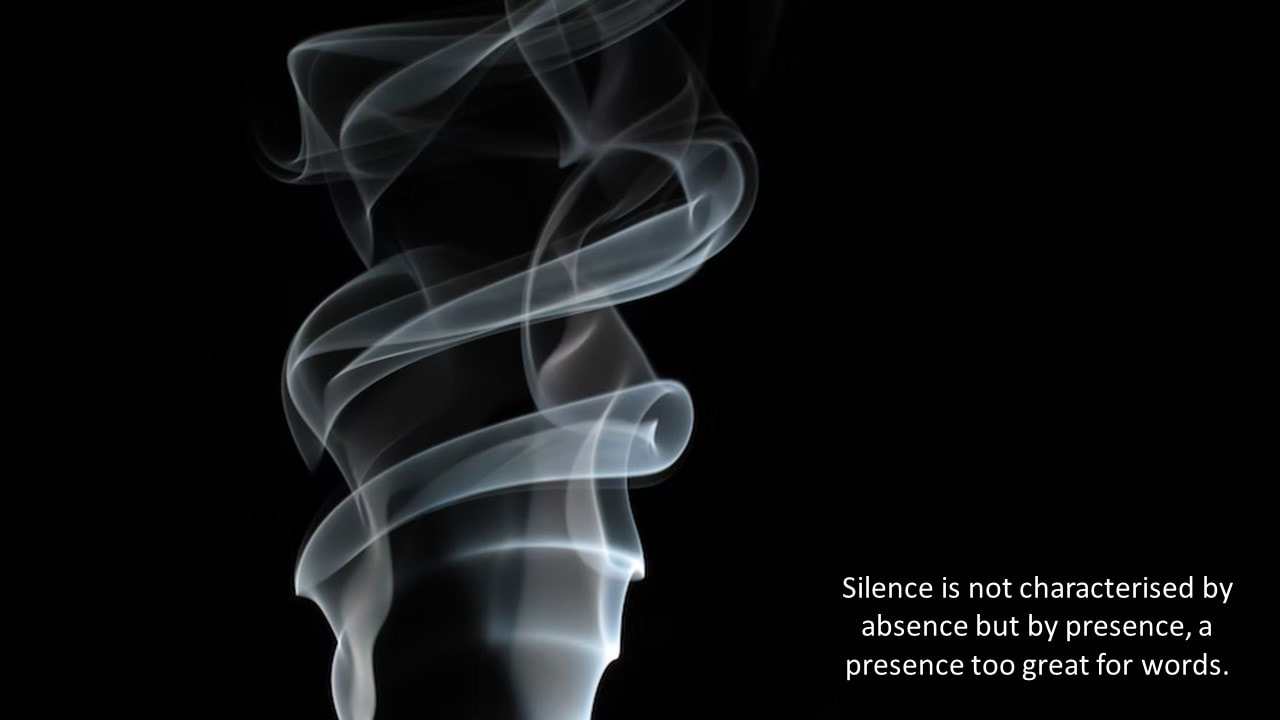In this series, some posts use short quotations but offer links to associated resources in the text below the image-backed quote. In other weeks, the short, image-backed quote are taken from a more extensive quotation from the month's author, given below the image. And in the last week of the month there are questions to encourage reflection on the month's quotations.
Quotes for each week of Febuary will appear below in ascending date order.
Quotes for each week of Febuary will appear below in ascending date order.
David Steindl-Rast, our author for February, is an Austrian-born, Roman Catholic Benedictine monk who has become an internationally renowned spiritual teacher through the wisdom contained in his lectures, workshops and widely acclaimed books.
Monday 6th February, 2023
David Steindl-Rast, The Way of Silence: Engaging the Sacred
in Daily Life (Darton, Longman and Todd, 2018), 1.
Image: Johnny Gios, Lake District, UK, unsplash.com/@supergios
This short image-backed quote is from David Steindl-Rast's The Way of Silence: Engaging the Sacred in Daily Life (Darton, Longman and Todd, 2018), 1. You can read more about this book by clicking here.
Brother David Steindl-Rast was born into a Roman Catholic family in Vienna as 'Franz Kuno Steindl-Rast' in 1926, and spent his early years in a small village in the Austrian Alps. Having tudied art, anthropology and psychology after the Second World War, in 1952 he completed a PhD in experimental psychology at his home city's University. Later that year he emigrated to the USA with his family - a decision that was inevitably influenced by living in Nazi-occupied Austria through the War with a Jewish grandparent. The following year, David became a Benedictine monk in the newly founded community at Mount Saviour Monastery, New York.
In 1967 he was officially approved by the Vatican to pursue Christian-Buddhist dialogue, and since this time has been one of the significant global figures in interfaith exploration, co-founding the Centre for Spiritual Studies with Jewish, Buddhist, Hindu and Sufi (the contemplative stream of Islam) teachers in 1968. Amongst Steindl-Rast's many books, Gratefulness: The Heart of Prayer: An Approach to Life in Fullness (Paulist Press, 1984), which explores the relationship between prayer and the sense of gratefulness that comes with love and which is at the heart of what it means to be human (see here), has been an enduring favourite of readers.
In 2000, Br. David established Grateful Living, a non-profit organisation that promotes gratitude through online and community-based education programmes - see here. A delight of its web presence is that you can send a wide variety of beautiful e-cards for all occasions for free, although a small donation is appreciated: see here. It's said that his 15 minute TED talk, 'Want to be Happy? Be Grateful', has been viewed over 10 million times across various platforms! You can watch this here. For those of you who would appreciate a longer engagement with this theme, see the hour long video, here. For extensive, additional information about Br. David, including a vast collection of written articles, his letters and interviews, see here and keep scrolling down the long page. Particularly lovely for those who enjoy plainchant and the daily offices is 'The Angel of the Hours' collection, recorded at Steindl-Rast's monastery in the USA during 2001, which you can go to directly, here. Known to many as the 'Grandfather of Gratitude', at 96, Brother David now lives in a monastery in his homeland where he continues to write.
Monday 13th February, 2023
David Steindl-Rast, The Way of Silence: Engaging the Sacred
in Daily Life (Darton, Longman and Todd, 2018), 33.
Image: Daniel Bowman, Utah, USA, unsplash.com/@dbow22
This short image-backed quote, above, is taken from the longer quotation, below, in David Steindl-Rast's The Way of Silence: Engaging with the Sacred in Daily Life (Darton, Longman and Todd, 2018), 28-29 & 33. You can read more about this book by clicking here.
'Since every thing, every person, every situation comes from God who speaks, the whole world is Word by which we can live. We need only “taste and see how good God is.” We do this with all our senses. Through whatever we taste or touch, smell, hear or see, God’s love can nourish us. For the one creating and redeeming Word is spelled out to us in ever new ways. God who is love, has nothing else to say in all eternity but “I love you!” And God says this in ever new ways through everything that comes into being. … We assimilate this food and it becomes our life. We live in its strength. We become Word.
So strong is this emphasis on Word in Christian spirituality that even some faithful Christians are hardly aware that there are within their own tradition other worlds of prayer to be explored. … Silence itself becomes our prayer. C. S. Lewis is in accord with the ancient Christian tradition when he speaks of God as an Abyss of Silence into which we can throw down our minds for ever and ever, and never will we hear an echo coming back. Yet, this silent abyss is paradoxically also the divine womb from which the eternal Word comes forth. As an early Christian saying puts it: “Those who can hear God’s Word can also hear God’s Silence.” The two are inseparable. … To know that Word is Silence and Silence is Word — distinct without separation, and inseparable, yet without confusion — this is Understanding.'
Monday 20th February, 2023
David Steindl-Rast, The Way of Silence: Engaging the Sacred
in Daily Life (Darton, Longman and Todd, 2018), 122.
Image: Daniel Thürler, Switzerland, unsplash.com/@drivemyart
This short image-backed quote, above, is taken from the longer quotation, below, in David Steindl-Rast's The Way of Silence: Engaging with the Sacred in Daily Life (Darton, Longman and Todd, 2018), 122-123. You can read more about this book by clicking here.
'Silence … is not the absence of word or sound. It is not characterised by absence but by presence, a presence too great for words. When we have some little joy or pain we are apt to talk about it. When joy or pain grows strong we rejoice or cry. But when bliss or suffering become overpowering — we are silent. Any encounter with mystery is hidden in silence. The very term “mystery” comes from the Greek word, muein: “to keep silent” or “close the mouth.” Mystery is not an empty emptiness but the incomprehensible Presence that touches us and renders us speechless as it imparts to us meaning.
Only by the tension between word and silence is meaning upheld. (Both “word” and “silence” are taken here in the most comprehensive sense, as two dimensions of all reality.) The moment we relax this tension meaning escapes us: the moment we break the tension meaning is broken. Failing to see the distinction between word and silence — a distinction greater and more basic than any other — would mean relaxing the tension. Yet pushing the distinction to the point of separation would break the tension. The point is that silence and word are distinguished as well as united by the third dimension … that of understanding.'
'Silence … is not the absence of word or sound. It is not characterised by absence but by presence, a presence too great for words. When we have some little joy or pain we are apt to talk about it. When joy or pain grows strong we rejoice or cry. But when bliss or suffering become overpowering — we are silent. Any encounter with mystery is hidden in silence. The very term “mystery” comes from the Greek word, muein: “to keep silent” or “close the mouth.” Mystery is not an empty emptiness but the incomprehensible Presence that touches us and renders us speechless as it imparts to us meaning.
Only by the tension between word and silence is meaning upheld. (Both “word” and “silence” are taken here in the most comprehensive sense, as two dimensions of all reality.) The moment we relax this tension meaning escapes us: the moment we break the tension meaning is broken. Failing to see the distinction between word and silence — a distinction greater and more basic than any other — would mean relaxing the tension. Yet pushing the distinction to the point of separation would break the tension. The point is that silence and word are distinguished as well as united by the third dimension … that of understanding.'
Monday 27th February, 2023
David Steindl-Rast, The Way of Silence: Engaging the Sacred
in Daily Life (Darton, Longman and Todd, 2018), 28.
Image: Keegan Houser, unsplash.com/@khouser01
The last week of each month in the 'Quoting Silence: A month with ...' series offers some questions to help you reflect further on the month's quotations and images, and how they resonate with your own spiritual journey and relationship with God.
Before reflecting on this month's quotes and images, take time to re-ground yourself in your body.
Perhaps take a few slow breaths, feel your feet on the floor and be aware of how your body feels in this moment.
1) Read back over the this month's quotes and spend time looking at their associated images. As you do so, note a phrase or image that draws your attention. If this is a phrase, you might like to write this out in a journal or on a piece of paper where you will see it regularly. Consider reading aloud several times what you have written to help the words sink more deeply into your heart. If an image resonates with you, let your gaze rest lightly on it for a couple of minutes, allowing it to speak to your heart. Consider using it as a screensaver for a while, or perhaps print it out and place it somewhere that you will see it often.
2) What emerges as you sit with the phrase or image that attracted your attention? Does a new insight or a question, emotion or sensation arise? Take some time to write down and ponder on whatever you notice.
3) Where can you see hope in the midst of what is emerging in you, for yourself, your neighbour, your community, or the planet? How might this impact your daily life and those with whom you share it?
4) In the days and weeks to come, how can you stay open to what you have discovered from your reflections?
Take some time to give thanks for the hope that you have found in this month's quotes and images.
|
To return to the 'Quoting Silence: A month with ...' Collection, click the button.
|





